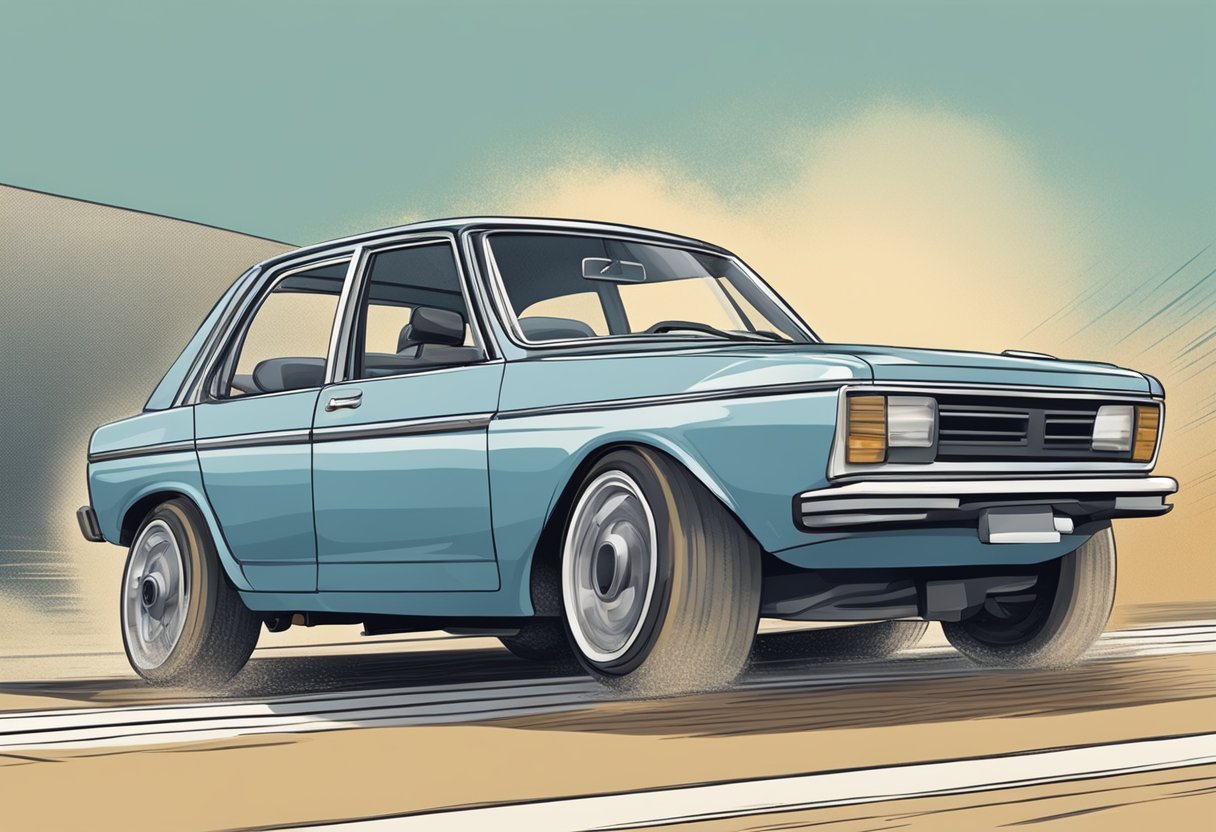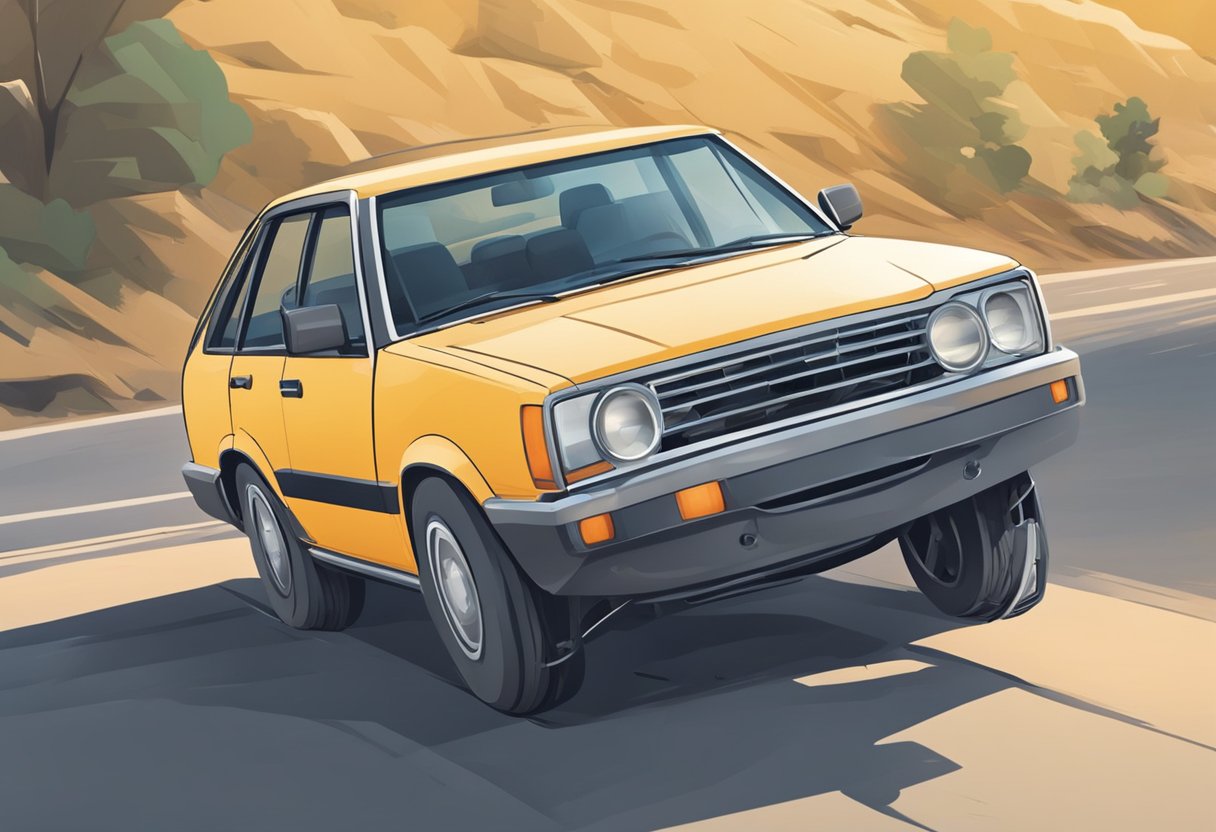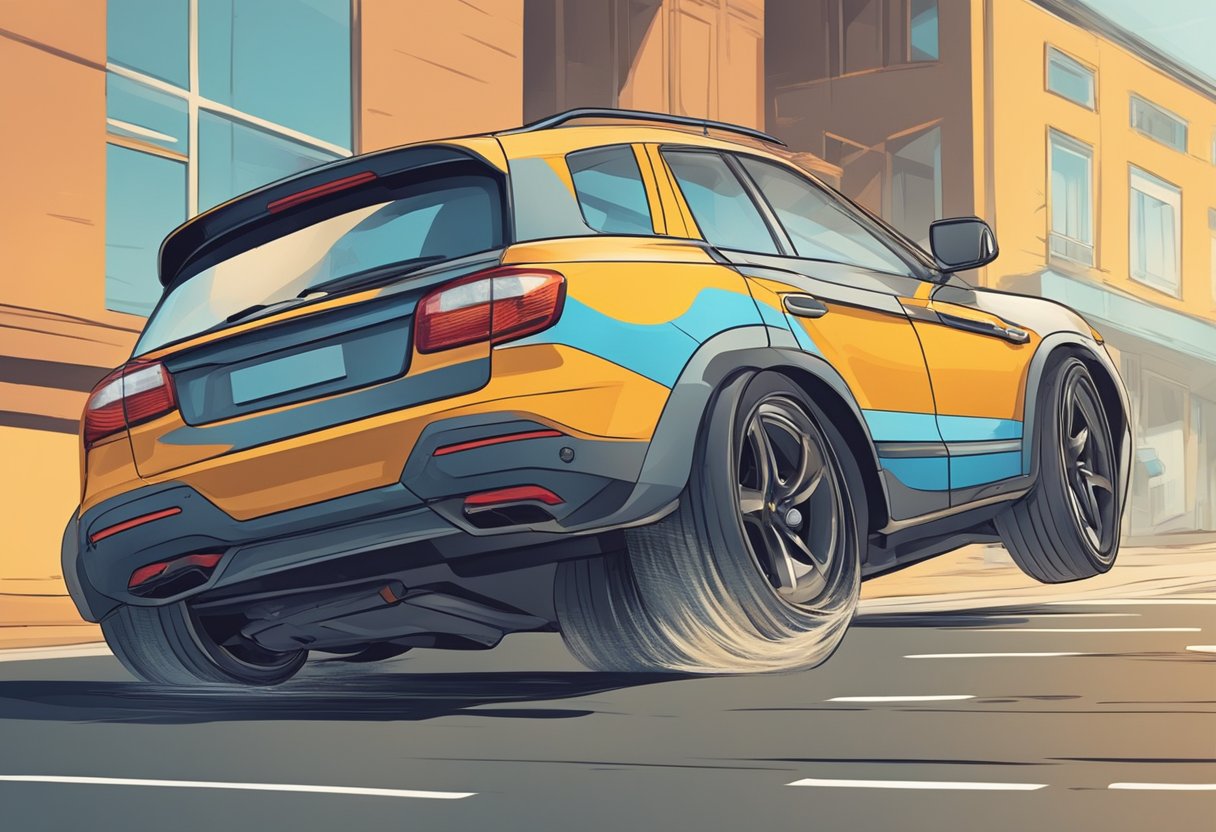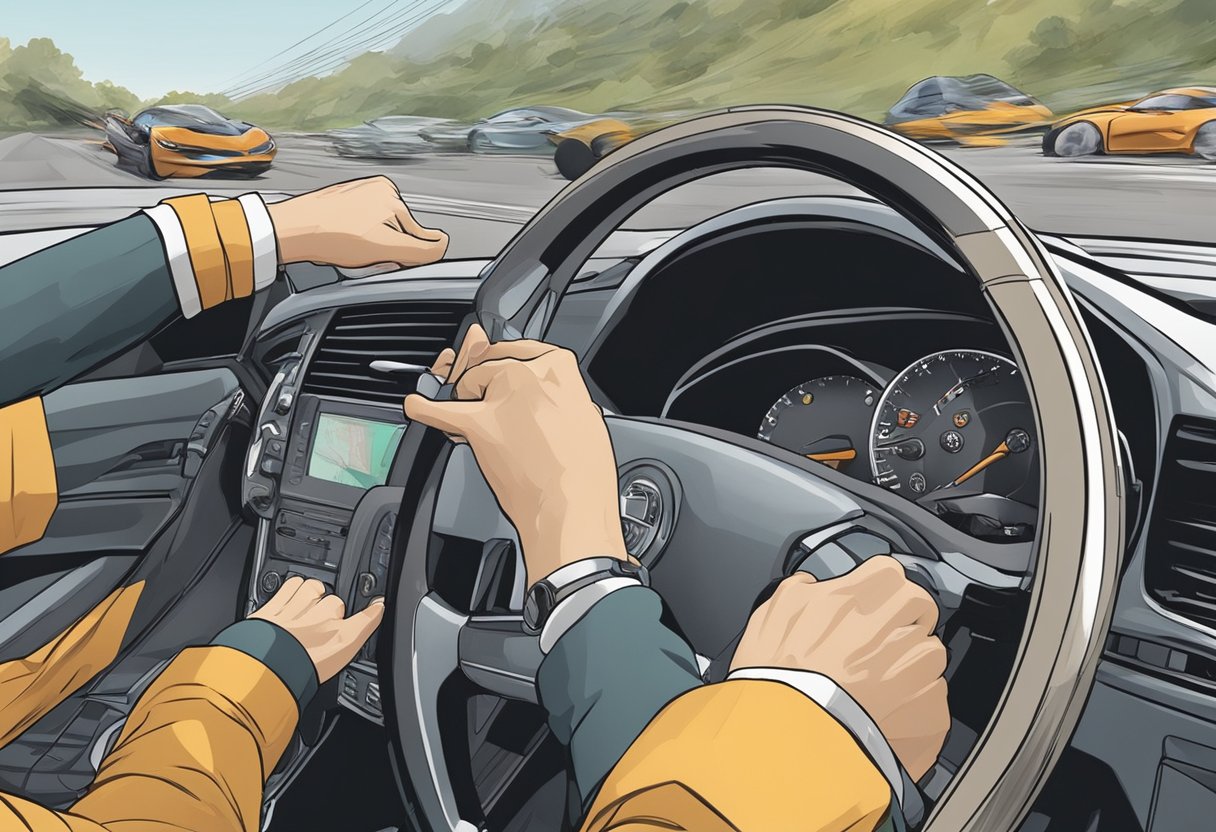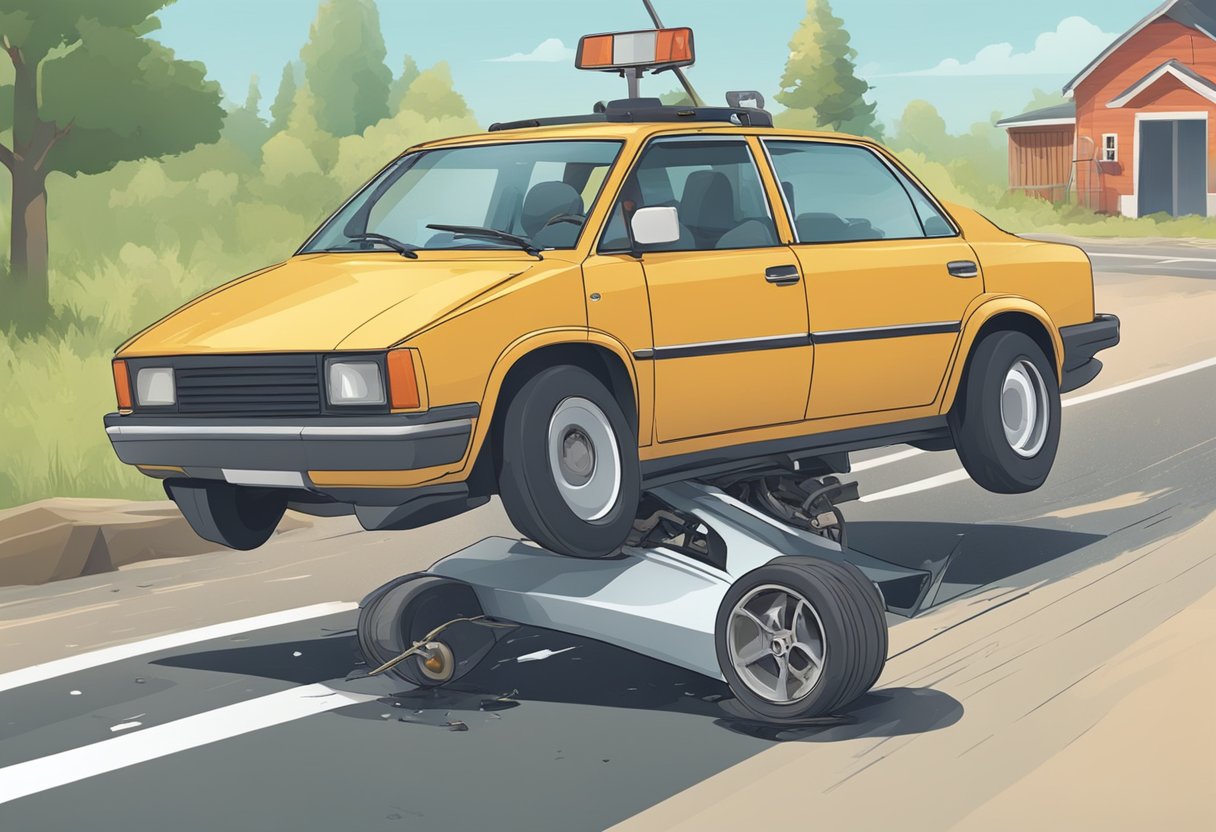As a driver, you rely on your vehicle’s control arms to keep your wheels in place and maintain proper alignment.
However, if these crucial components fail while you’re driving, the consequences can be severe.
Control arm failure can cause your car to swerve, pull to one side, or even lose control entirely, putting you and other drivers on the road at risk.
There are several reasons why control arms may fail, including wear and tear, corrosion, and damage from collisions or potholes.
If you suspect that your control arms are failing, it’s important to take immediate action to prevent further damage and ensure your safety on the road.
In this article, we’ll explore the risks associated with control arm failure while driving and provide guidance on what to do if you experience this issue.
Understanding Control Arm Function
When it comes to your vehicle’s suspension system, the control arm plays a crucial role in maintaining stability and control.
Control arms are part of the suspension system that connects the steering knuckle and the frame of the vehicle.
They are responsible for keeping the wheels in place and allowing them to move up and down as you drive.
Control arms are designed to withstand a lot of stress and pressure, but over time they can become worn or damaged.
When this happens, the control arm can fail, which can be extremely dangerous while driving.
There are different types of control arms, including upper and lower control arms, and they can be made from various materials such as aluminum, steel, or polyurethane.
Some control arms also have bushings, which help to absorb shock and reduce vibration.
It’s important to understand the function of control arms so that you can recognize the signs of failure and take immediate action.
Signs of control arm failure can include uneven tire wear, a shaking or vibrating steering wheel, or a clunking noise when going over bumps.
If you suspect that your control arms may be failing, it’s essential to have them inspected by a professional mechanic as soon as possible.
Continuing to drive with a failed control arm can lead to loss of control of the vehicle, which can result in a serious accident.
Identifying Control Arm Failure
If you suspect that your control arm has failed while driving, it is important to take immediate action to prevent further damage or accidents.
Here are some signs to look out for when identifying control arm failure:
Visual Inspection Signs
One way to identify control arm failure is through a visual inspection. Look for the following signs:
- Cracks or bends in the control arm
- Rust or corrosion on the control arm
- Loose or missing bolts on the control arm
- Uneven tire wear
If you notice any of these signs, it is important to have your vehicle inspected by a professional mechanic as soon as possible.
Driving Symptoms
Another way to identify control arm failure is through the way your vehicle drives. Look for the following symptoms:
- Vibrations or shaking in the steering wheel
- Clunking or banging noises when driving over bumps or uneven surfaces
- Steering wheel pulling to one side
- Difficulty steering or controlling the vehicle
If you experience any of these symptoms, it is important to pull over and have your vehicle inspected by a professional mechanic.
Continuing to drive with a failed control arm can lead to further damage or accidents.
Remember, it is important to always stay aware of your vehicle’s performance and take action as soon as you notice any signs of control arm failure.
Risks of Control Arm Failure While Driving
When the control arm fails while driving, it can lead to various risks that can be detrimental to your safety on the road.
In this section, we will discuss the potential risks associated with control arm failure while driving.
Loss of Vehicle Control
One of the most significant risks of control arm failure is the loss of vehicle control.
The control arm is a crucial component of the suspension system that helps to stabilize the vehicle’s wheels and keep them in line with the road.
When the control arm fails, it can cause the wheels to move out of alignment, leading to a loss of control of the vehicle.
This can be especially dangerous when driving at high speeds or on winding roads.
Potential for Collision
Another risk of control arm failure while driving is the potential for a collision.
When the control arm fails, it can cause the wheels to move out of alignment and affect the steering of the vehicle.
This can cause the driver to lose control of the car and potentially collide with other vehicles or objects on the road.
The risk of collision is especially high when driving in heavy traffic or on busy highways.
To avoid these risks, it is essential to take immediate action if you suspect that your control arm may be failing.
If you notice any signs of control arm failure, such as unusual noises or vibrations while driving, it is crucial to have your vehicle inspected by a qualified mechanic as soon as possible.
Taking prompt action can help to prevent accidents and ensure your safety on the road.
What Are the Risks and Actions to Take If a Control Arm Fails While Driving?
When a control arm fails while driving, the risks of reversing jumper cables can be significant. The car may lose steering control, leading to potential accidents or damage. If this happens, it’s crucial to remain calm, minimize steering, and safely pull over to the side of the road.
What Should I Do if I Experience Control Arm Failure While Using Hand Turn Signals?
If you experience control arm failure while using safe hand turn signals, it’s important to safely pull over and assess the situation. Avoid making any sudden movements and use hazard lights to alert other drivers. Contact a professional for assistance and refrain from using hand turn signals until the issue is resolved.
Immediate Actions Upon Failure
If your control arm fails while driving, it is important to take immediate action to avoid accidents and injuries.
Here are the two most important actions you should take:
Pull Over Safely
As soon as you notice that your control arm has failed, you should pull over to the side of the road as quickly and safely as possible.
Try to steer your vehicle to the side of the road that is farthest from traffic, if possible.
If you are on a highway, try to get to the nearest exit or pull off onto the shoulder.
Once you have pulled over, turn on your hazard lights and set up reflective triangles or flares to warn other drivers of your presence.
If you are unable to pull over to the side of the road, try to drive your vehicle to a safe location where you can stop.
Contact Emergency Services
After you have pulled over safely, you should contact emergency services immediately.
Call 911 and tell the operator that your control arm has failed and that you need assistance.
Be sure to give them your location and any other relevant information, such as the make and model of your vehicle.
While you are waiting for emergency services to arrive, stay in your vehicle with your seatbelt fastened.
Do not attempt to fix the control arm yourself or get out of your vehicle unless it is absolutely necessary.
Remember, control arm failure can be dangerous, so it is important to take immediate action if it happens while you are driving.
By pulling over safely and contacting emergency services, you can help prevent accidents and injuries.
Professional Assessment and Repair
If you suspect that your control arm has failed while driving, it is crucial to seek professional assessment and repair immediately.
Professional repair is essential to ensure that the control arm is replaced correctly and that the vehicle is safe to operate.
Towing to a Repair Facility
If you are unable to drive your vehicle to a repair facility, you should have it towed.
Towing is the safest option, as driving with a failed control arm can be dangerous and cause further damage to your vehicle.
Be sure to inform the towing company that your vehicle has a failed control arm and that it needs to be transported with caution.
Mechanical Inspection and Replacement
Upon arrival at the repair facility, a mechanic will perform a mechanical inspection of your vehicle to determine the extent of the damage.
The mechanic will inspect the control arm, suspension components, and other parts of the vehicle that may have been affected by the failure.
If the control arm is found to be damaged or broken, it will need to be replaced.
The mechanic will install a new control arm and ensure that it is properly aligned and secured.
Other damaged components will also be repaired or replaced as necessary.
It is crucial to have a professional mechanic perform the repair to ensure that the control arm is replaced correctly and that your vehicle is safe to operate.
Attempting to repair the control arm yourself or using an unqualified mechanic can result in further damage to your vehicle and put your safety at risk.
In summary, if you suspect that your control arm has failed while driving, seek professional assessment and repair immediately.
Have your vehicle towed to a repair facility and have a professional mechanic perform a mechanical inspection and replacement of the control arm and any other damaged components.
As an Amazon Associate we earn from qualifying purchases.








